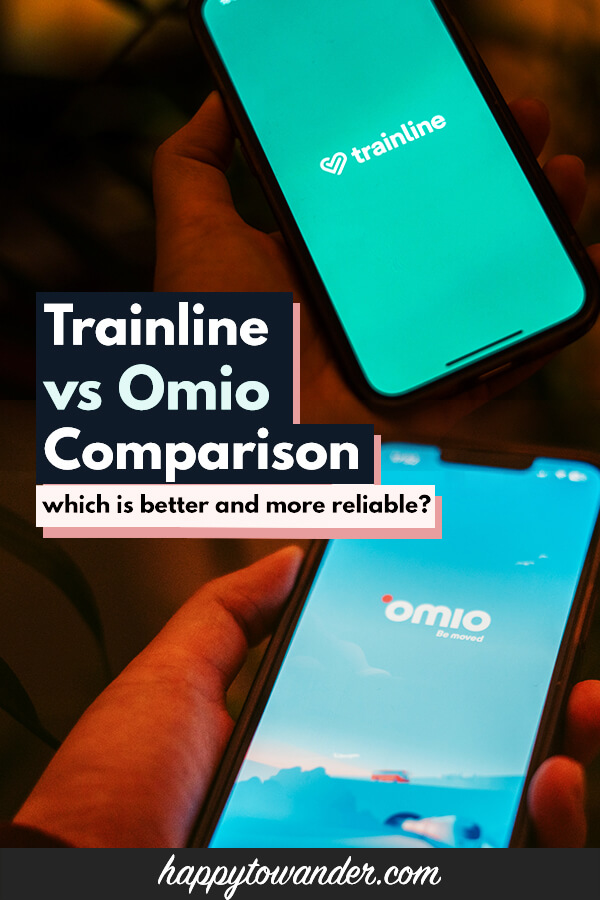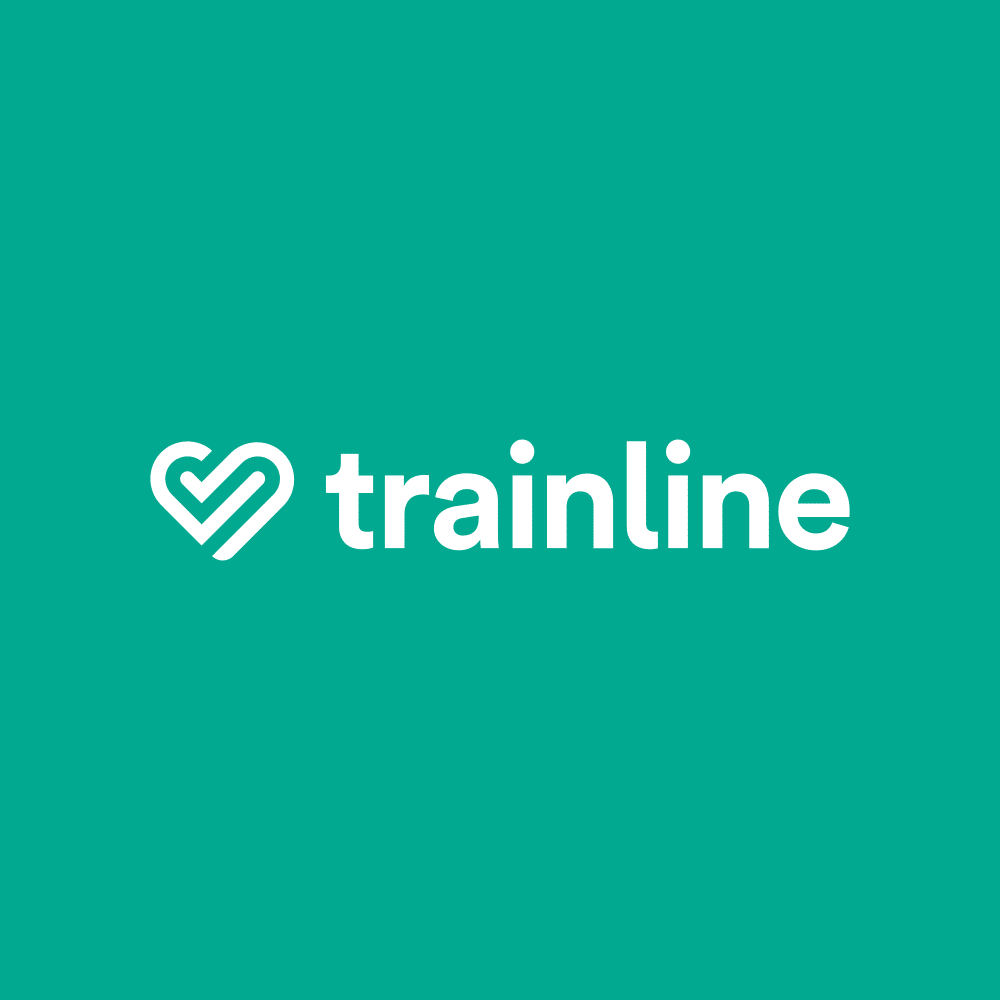*FYI - this post may contain affiliate links, which means we earn a commission at no extra cost to you if you purchase from them. Also, as an Amazon Associate I earn from qualifying purchases. Check out our Privacy Policy and Disclosure. for more info.
If you’re an overwhelmed traveler reading this right now, odds are you’ve hit an impasse with your Europe trip plans. Like thousands of travelers before you, you’re stuck with the decision of whether you should book with Omio, Trainline (or neither) and are now digging for a straightforward comparison of the two..
Did I nail it?! Well, good news – you’re in the right place.
For the past five years, I’ve been using both Omio and Trainline to book trips around Europe. Both provide similar pros and cons, but with slightly nuanced advantages that depend on a few factors.
So, read on for a full comparison of Omio vs Trainline and which booking platform makes more sense depending on your trip… from an avid traveler who might as well live on them.
Omio vs Trainline: at a Glance
Planning a trip to Europe is an exciting bucket list endeavour…
And while I wish it was a completely stress-free experience filled only with delight, the truth is, before you can roll around in a field of croissants, you need to book transport… a feat marred by tremendous confusion when you factor in the hundreds of potential companies in dozens of language you can book with.
Luckily, there are now several “one stop shop” platforms that combine many different companies and options so you can search them all at once. Two main players in this space are Omio and Trainline.
Omio is a website and app that allows you to search and book transport options from Point A to Point B including trains, buses, flights and ferries. It was first established in 2013 under its original name, GoEuro. It transitioned to Omio in 2019, shortly before launching their services to the US and Canada in 2020… perfect timing for any travel platform! As of 2023, they’re active in 37 countries and partner with over 1000 transport providers.
Trainline (as evidenced by its name) is a website and app that focuses mainly on train travel in Europe, with some options for bus/coach travel in the UK. They’ve been in the game much longer – since 1997 in fact, when they started out selling train tickets on the phone hence the name train…..line! These days, they’re rolling with the digital age and now work with over 270 transport providers across 45 countries, selling tickets online.
|
Primary Rating:
4.5
|
Primary Rating:
4.2
|
|
Coverage:
1000+ transport providers across 37 countries (including US & Canada)
|
Coverage:
250 train and bus operators in 45 countries
|
|
Modes of Transport Covered:
Trains, Buses, Flights & Ferries
|
Modes of Transport Covered:
Trains and Buses
|
|
Mobile App:
Yes
|
Mobile App:
Yes
|
|
Payment Methods:
17 Including Card Payments, Digital Wallets & Bank Transfers
|
Payment Methods:
Card Payments & Digital Wallets
|
|
Currencies Supported:
26
|
Currencies Supported:
GBP, EUR, USD, AUD, CAD, CHF, SEK, DKK, NOK, JPY
|
|
In-App Railcards:
No
|
In-App Railcards:
Yes
|
Alright, now it’s time to break down and compare where Omio and Trainline stack up in terms of key features.
Platform Coverage
One of the key differences between Trainline and Omio is their transport operator coverage. Knowing their differences might help you decide which one to choose.
According to their official corporate page, Omio works with over 1000 transport providers across 37 countries, including those providing trains, buses, flights, and ferries in most EU countries, as well as the US and Canada.
In contrast, according to their official website, Trainline works with over 270 transport providers across 45 countries in Europe… most of the operators being train companies, including the 28 (!!!) major UK rail providers. This is why Trainline is such a popular pick for UK train travel, and actually my go-to whenever booking train tickets in the UK.
So, in terms of coverage, I would say to pick the one that has more thorough coverage of your desired destinations. In most cases, I think Omio would win this one (assuming you’re travelling to multiple countries, and may use multiple modes of transport to find the cheapest ways to get around) but there are some exceptions, like (as I mentioned) the UK, where I find Trainline’s features offer a more seamless experience.

Interface & Ease of Use
While both Omio and Trainline have very intuitive and user-friendly platforms, both offer distinct advantages that the other doesn’t.
Omio’s website and app have great search/sort functions that Trainline does not, like being able to filter based on price, number of stops, duration, and departure time. It also of course includes more modes of transport, so usually Omio will be my go-to if I’m travelling longer distance and across multiple countries.
While the Trainline app lacks sorting/filtering options and instead shows journeys in order of departure time, the desktop version of Trainline does have some great search functions that Omio does not. For instance, when booking trains in the UK, you can see all the possible ticket types (a real headache!) on a handy table broken down by departure so you can try to find the best deal.
Trainline can also show you things like potentially cheaper tickets via split ticketing in the UK, but there are other sites that do this for free as well like Split My Fare.
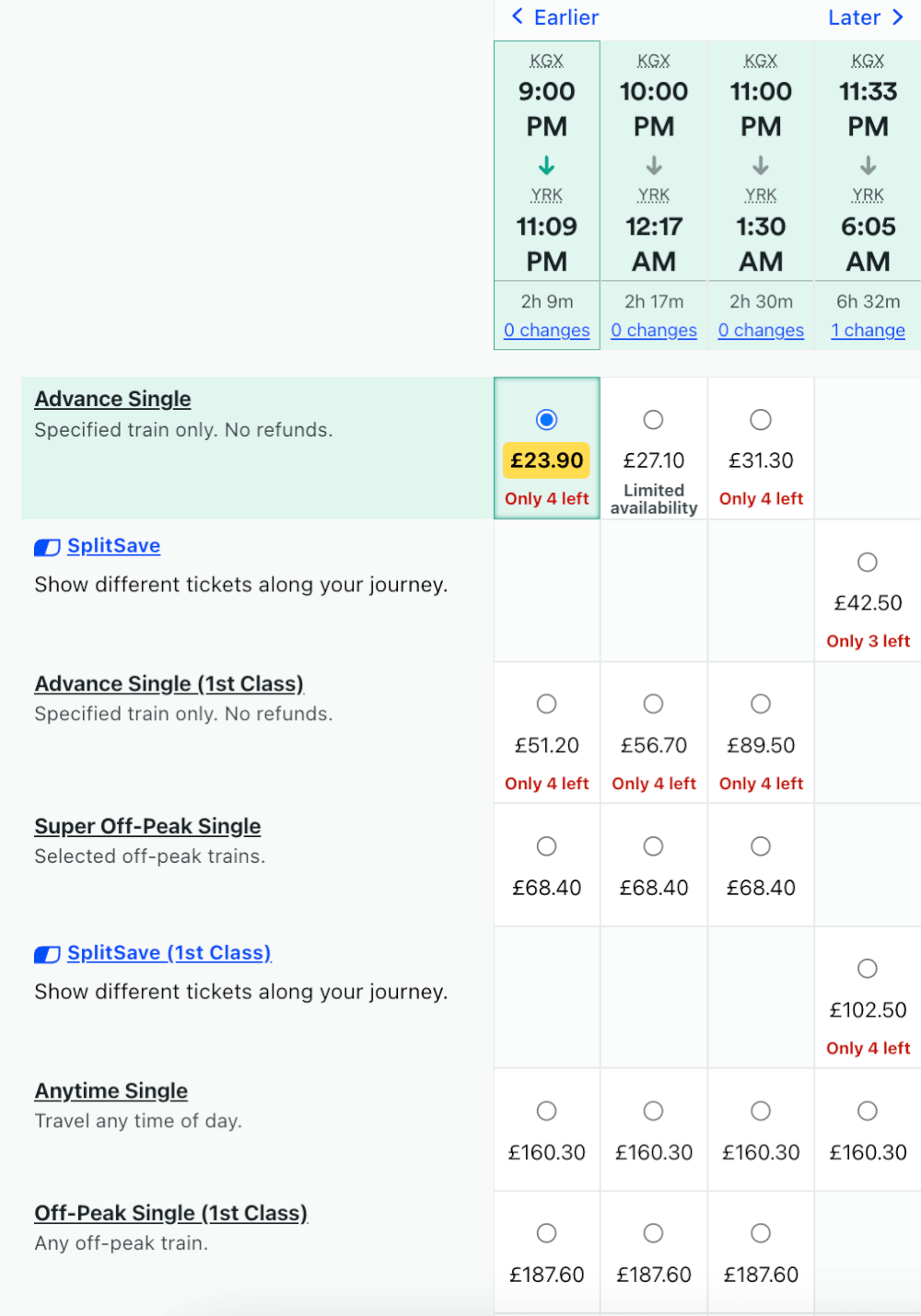
Cost and Fees
Price-wise, you won’t find a huge difference between Omio and Trainline. This is because both of them partner with the same companies and prices are set by the transport providers themselves.
BUT it’s important to note that both Omio and Trainline take a service fee on certain bookings, which means booking with them will cost you a bit more than booking directly with the transport provider.
Annoyingly, the amount you’re charged depends on the journey itself, and there’s no easy way to calculate how much the fee will be. BUT in either case, you can think of the fee as a small charge for the convenience and simplicity of booking with one platform, compared to scouring the Internet looking at options across multiple sites. Time is money too, and in most cases I don’t mind the small fee for the time/sanity it saves me.
If you’d prefer to score the cheapest possible deal though, there’s nothing stopping you from using Trainline or Omio to search for the best journey, then going onto the transport provider’s website and booking it directly from them. This adds a layer of hassle but will allow you to get the best price possible.
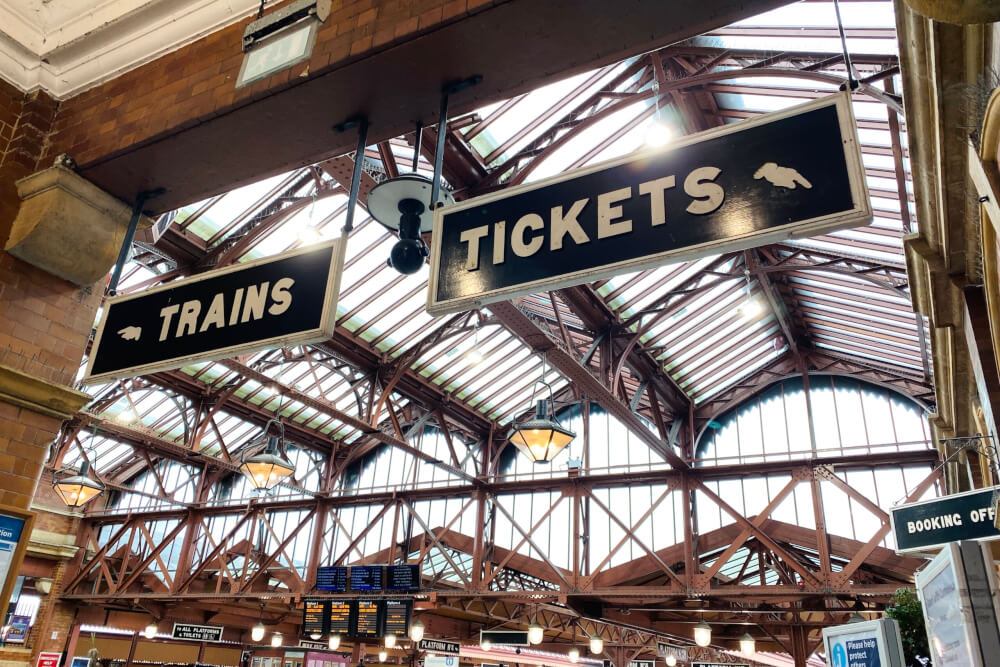
Discount Codes & Coupons
Speaking of “best price possible”, is it Omio or Trainline that’s better at finding discounts?
Honestly, Omio might win this one. They often have special promo codes floating around throughout the year, and they’ll even send you coupons directly into your in-app inbox.
I also like that in the search process, you can enter your age (which can unlock cheaper prices in certain countries), and also add potential discount cards that you might have. Add on a 5% student discount and there’s definitely more potential to score discounts on Omio.
That said, while general Trainline discounts are harder to come by, one edge they have over Omio is you can buy a Railcard for UK train travel through them that saves you 1/3 on all journeys. You can then keep this Railcard in your app for easy access whenever you’re on board.
This feature was SO convenient during my time in the UK, saved me hundreds of GBP and it’s something that Omio doesn’t have. I believe there’s the option to add other loyalty cards for different companies as well, but I haven’t personally tried those.
NOTE: In either case, I’d recommend downloading the free Chrome extension Honey, which automatically scours the web for discount codes and applies them so it’s like free money.
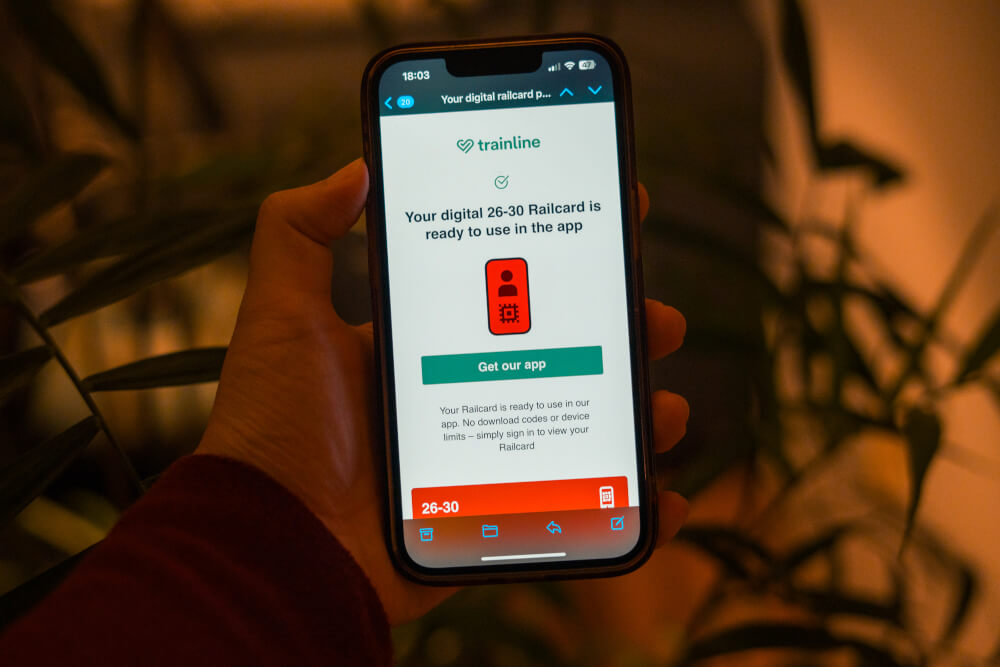
Payment Methods
I don’t think the issue of payment methods is a huge deal in the Omio vs Trainline debate because both service most major payment methods, but for the sake of a thorough comparison, you should know that Omio does allow you to pay in many more currencies and payment methods than Trainline.
According to this page on their official site for instance, Omio allows you to pay in 26 different currencies using 17 secure payment options, including…
- Credit and Debit Cards (Visa, Mastercard, Maestro, Diners Club / Discover, Carte Bancaire, JCB, UnionPay)
- Digital Wallets (PayPal, Apple Pay, Google Pay, Alipay)
- Direct Bank Transfers (Sofort, iDEAL, Przelewy24, Klarna)
In contrast, based on their official help page here, Trainline allows you to pay in GBP (£), Euros (€), US Dollar ($), Australian Dollar (A$), Canadian Dollar (C$), Swiss Franc (CHF), Swedish Krone (SEK), Danish Krone (DKK), Norwegian Krone (NOK), and Japanese Yen (JPY).
Though exact options depend on the currency, their payment options include…
- Card payments (Visa, MasterCard, American Express, Diners Club, Maestro)
- Digital Wallets (PayPal, Apple Pay & Google Pay)
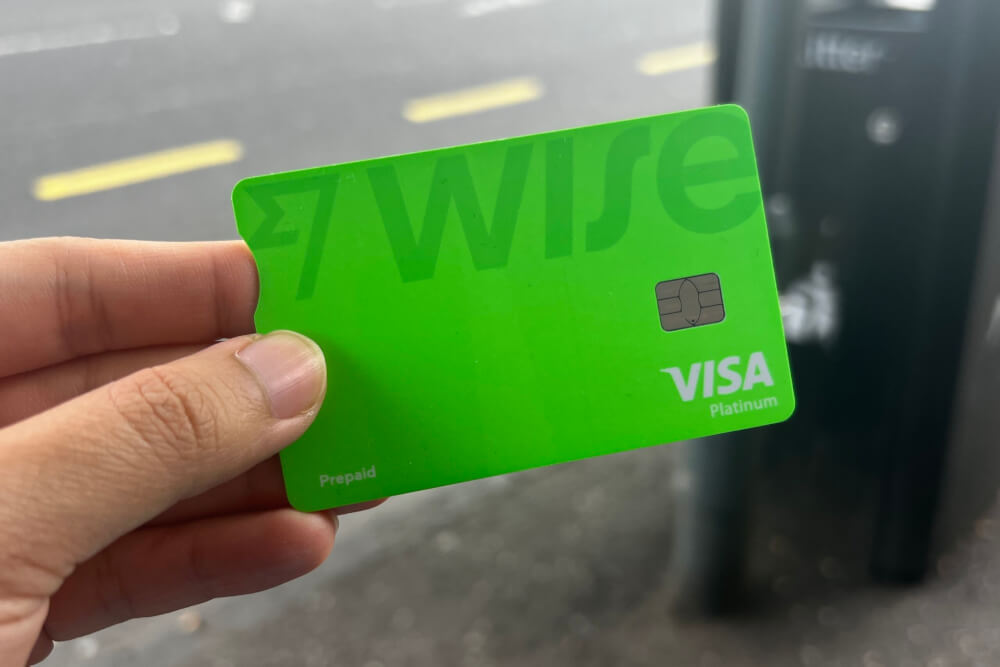
Seat Reservations
If you’re booking a long distance train that requires reserved seats, then Trainline (or booking direct, honestly) would be the better option.
This is because Omio automatically assigns you seats based on your preferences, whereas in some cases, Trainline will let you actually pick your own seat on a seating chart, like when you’re booking flights.
This does depend on the specific operator though – in a lot of cases, Trainline’s seat allocations are random as well, so if having a reserved seat of your own choosing is important to you, it may be better to book your reservation directly through the transport operator’s website.
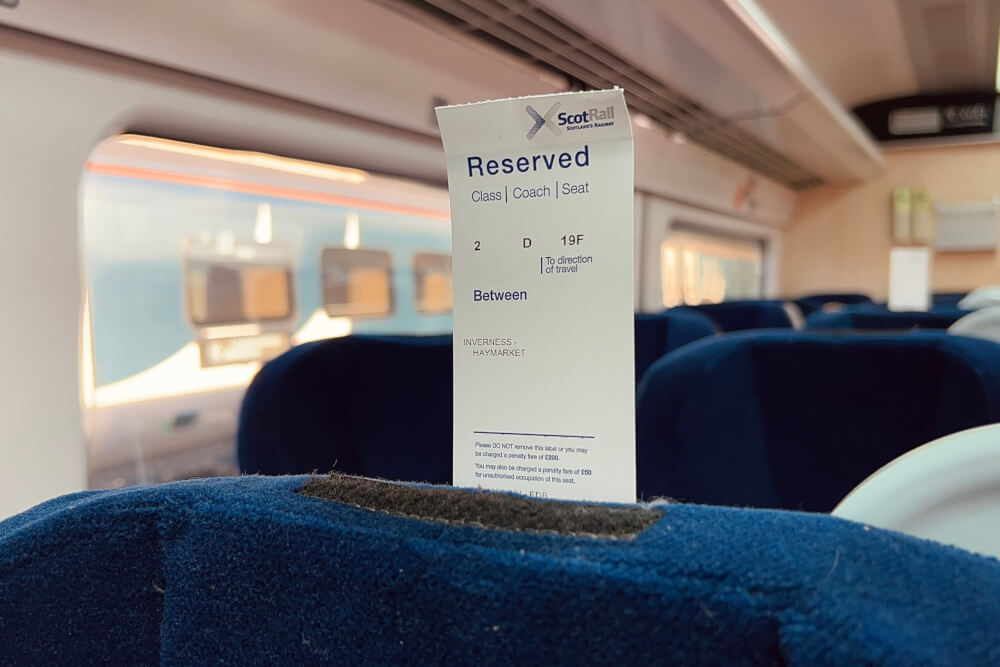
Other Helpful Resources
Besides the main search/booking functionality, both Omio and Trainline have some additional features and resources the other doesn’t, so I’ll summarize them now.
Omio for instance is partnered with Booking.com so you can search up accommodation at the same time. To be honest, this doesn’t save a ton of time (on desktop, they literally just open up a separate Booking.com window for your destination and on the app, it’s just a list of hotels to browse) but handy if you’re someone who likes to browse everything at once.
Trainline‘s app is fairly minimalist, but their website is honestly a treasure trove of information, especially when it comes to demystifying the intricacies of complicated rail systems like the UK’s. Google any confusing thing about UK train travel and the top result will probably be Trainline, explaining it in simple terms. Even if you don’t like using them for booking travel, you have to admit that they’re really good at explaining how things work.
The other main feature of Trainline’s that Omio doesn’t have is their Ticket Alert system. If you’re keeping an eye on tickets that haven’t gone on sale yet, you can enter your desired route and date on Trainline and then they let you know when tickets go on sale. This is really handy if you’re trying to book as far in advance as possible!
Both also offer a more inspiration ‘travel blog’ type section of their websites – Omio with their publication “the Window Seat” and Trainline with their “Travel Journal”. I’m kind of indifferent to this – I think there’s better travel content out there (in my totally unbiased opinion), but just know it’s there if you’re curious.

Referral Program
Lastly, it’s worth mentioning that Omio is has a ‘refer a friend’ program where you can earn €10 for inviting friends, who then get €10 off their first booking. A pretty sweet win-win! If you have more friends than I do, you can even max out your referral bonus which is capped at €1000, AKA more Flixbus rides than your body could ever handle.
Trainline as far as I know does not offer any referral program – only an affiliate program for creators that pays a small percentage commission, which isn’t particularly useful for everyday travelers.

Other Alternatives to Omio & Trainline
While the focus of this post has been about pitting Omio and Trainline against each other, I should note that there are some other alternatives that may be better depending on your needs. I’ll summarize them now.
Direct Booking
Hands down, if you don’t mind the inconvenience of it, booking directly with transport operators is the way you should go. I don’t often do this because I’m lazy but direct bookings will usually be the cheapest and customer support will usually be better if something ends up going wrong.
This means going directly to the company (e.g. Deutsche Bahn) and booking from them directly.
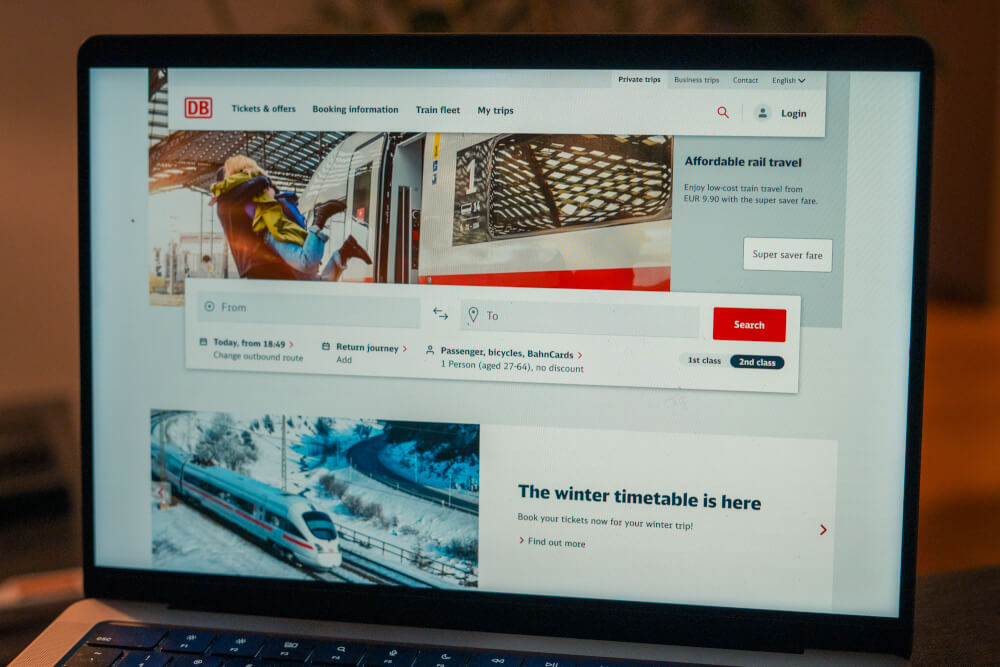
RailEurope
RailEurope has been around since 1930. 1930!! They’re often also mentioned alongside Omio and Trainline, but to be totally honest, I’ve never found a reason to use them over their competitors. If you’re a RailEurope fan, feel free to prove me wrong in the comments, but I feel like their user interface is clunkier and they don’t do much that Omio or Trainline can’t.
Although they DO have a carbon calculator that tells you how much carbon you save by taking your mode of transport, compared to flying. So that’s nice… and they have a search portal for rail passes as well.
That said, they charge a fee for rail passes so I feel like you’re definitely better off buying them directly from the transport companies themselves.
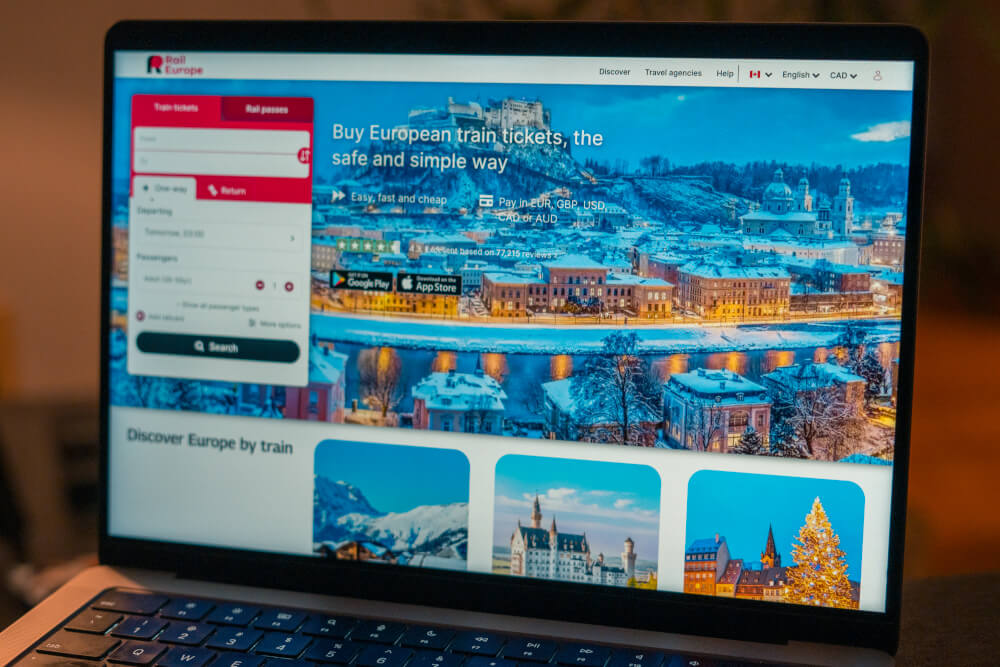
Conclusion: Which is Better – Omio or Trainline?
I’ve talked a lot about the pros and cons of both Omio and Trainline today… hopefully giving you enough knowledge to make the choice for yourself. I’ll quickly summarize below though who I think each platform is best suited for.
Overall, I recommend Omio if you…
- Don’t mind paying an extra fee for simplicity/convenience
- Are planning a trip that spans across various modes of transport and countries
- Need to compare trains, buses, flights AND ferries
- Book trips for the US and Canada, in addition to Europe
- Want to take advantage of the €10 refer a friend program
- Are a student and want to take advantage of their 5% student discount
- Want to pay in a currency/payment method that’s not available with Trainline or direct bookings
In contrast, I recommend Trainline if you…
- Are mainly planning train travel and don’t need to compare other modes of transport
- Are travelling in the UK, and plan to buy/use a RailCard
- Don’t mind paying an extra fee for simplicity/convenience
- Travel a lot for business, and want easy invoices at your fingertips
Lastly, I recommend booking directly with transport providers if you…
- Want the lowest possible price, and don’t mind sacrificing some convenience for it
- Prioritize excellent customer service

I Hope You Enjoyed this Omio vs Trainline Post!
If you have experiences with either platform, be sure to chime in below and share your experience. Safe and happy travels 🙂

